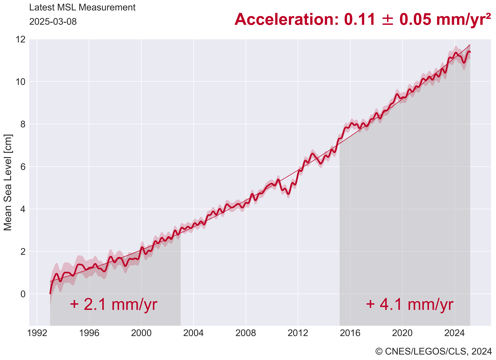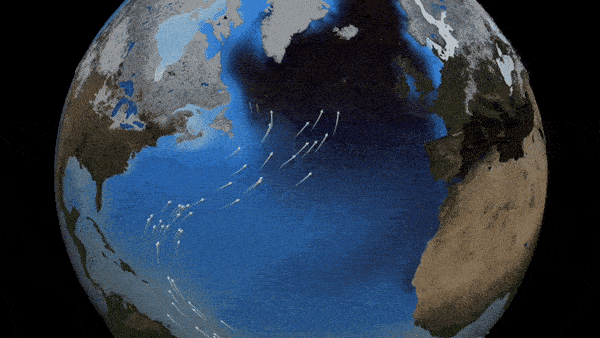|
|
Post by Sigurdur on Aug 19, 2024 1:35:37 GMT
www.nature.com/articles/s41586-019-1764-4The Madden–Julian Oscillation (MJO) is the most dominant mode of subseasonal variability in the tropics, characterized by an eastward-moving band of rain clouds. The MJO modulates the El Niño Southern Oscillation1, tropical cyclones2,3 and the monsoons4,5,6,7,8,9,10, and contributes to severe weather events over Asia, Australia, Africa
|
|
|
|
Post by nonentropic on Aug 20, 2024 4:27:52 GMT
I think the MJO is really a metric rather than a cause. Joe B is always all over the MJO, he is getting a little wobbly on some stuff and also risking his company with his rabbit holes.
The "tele-connect" thing is in my mind about air sloshing from one side of a pole to the other one side warm one side cold with atypical weather in amongst it all.
The SSW in the south looks to have wobbled Australian and NZ weather NZ gets snow now Australia get warm (weather reports)
Been up in Vacouvistan Canada for a week they all look very prosperous out here enjoying their exploitative mining and exploration for profit lifestyle, bit woke for me but such is the world we live in.
Weather looks very average to me and so say they all.
|
|
|
|
Post by duwayne on Aug 25, 2024 14:34:06 GMT
"NOAA data shows Atlantic sea surface temperatures have cooled at a surprising rate since May. Since June began, temperatures have been a degree or two Fahrenheit colder than normal for this time of year. That means El Niño will likely be replaced by its counterpart, La Niña, a weather system that allows cold water to rise to the surface of the Atlantic, some time between September and November. Both El Niño and La Niña are complex systems driven by trade winds, solar heating, and rainfall in the tropic regions, and can be difficult to predict. Still, the sudden shift in Atlantic temperatures has been puzzling, and nobody seems to know why it’s happened so quickly.
“We’ve gone through the list of possible mechanisms, and nothing checks the box so far,” Frans Philip Tuchen, a postdoctoral student at the University of Miami, told New Scientist."
Is the AMO showing a major drop like it usually does at this point in its cycle?
|
|
|
|
Post by duwayne on Aug 25, 2024 15:29:37 GMT
Wiggle-watch update. A leak in the ocean?

|
|
|
|
Post by duwayne on Aug 25, 2024 15:40:01 GMT
The Atlantic Gulf Stream was unexpectedly strong during the last ice age – new study
|
|
|
|
Post by acidohm on Aug 25, 2024 17:27:32 GMT
Just registering an interest in this, always keen on Atlantic/Pacific ssta. Glancing at my usual sources like tropical tidbits...not seeing much there??
Eastern seaboard USA looking cooler then has for some time.
|
|
|
|
Post by blustnmtn on Aug 25, 2024 18:31:19 GMT
The Atlantic Gulf Stream was unexpectedly strong during the last ice age – new study
In spite of this work being couched in the pursuit of the impacts of anthropogenic climate change, it seems to be somewhat objective. |
|
|
|
Post by duwayne on Aug 27, 2024 15:09:43 GMT
Back in February 2023, I made 3 posts discussing the possibility that we might be in for some global cooling ahead.
My thinking was as follows... 1)The AMO was not dropping as it had in the past which meant the Gulf Stream was stronger than usual 2)The Gulf Stream ultimately downwells and returns to the south far below the surface where it cools (see video below)
3)Therefor, somewhere below the equator we could possibly see a significant increase in the upwelling of cool water which would cool the ocean surface
4)This cool water upwelling could cool global temperatures similar to the cooling that comes from La Nina upwelling.
Could this explain the mysterious upwelling in the Atlantic being reported recently?
Hunga Tonga is probably currently masking any cooling effect of the upwelling but if the flow continues and the warming Hunga Tonga effect recedes could there be some unusual cooling ahead?
What I am about to cover in this post and 2 more posts which will follow is not a prediction, but a possibility. The possibility is we might be in for some cool global temperatures ahead. (Snip)  ![]() |
|
|
|
Post by missouriboy on Aug 27, 2024 15:42:46 GMT
I like your thesis Duwayne. It makes a lot of physical science sense. And doesn't require attaching magical attributes to otherwise beneficial atmospheric gasses.
|
|
|
|
Post by duwayne on Aug 28, 2024 17:14:57 GMT
if you look at the video in my post above, you will see that the subsurface stream resulting from the gulf stream heads south from Iceland.
Here is a map of the ocean floor. Could a subsurface ocean current stream caused by a strong gulf stream find its way from south of Iceland to an area off the African coast without being blocked by land under the ocean? Could it upwell at that point? |
|
|
|
Post by duwayne on Aug 28, 2024 17:19:49 GMT
If the ocean surface off the west coast of Africa happens to cool will this reduce the number of hurricanes?
|
|
|
|
Post by duwayne on Aug 28, 2024 17:33:17 GMT
The articles about the cooling observed off the African coast note that the cause is a complete mystery. If your finances depended on the interest in global warming could you be expected to find an explanation that might mean global cooling?
If there is an election ahead where your preferred candidate benefits from claims of global warming, would you want to speculate about something that says it may be less of a problem than thought -before the election?
Why did the AMO data which shows the unusually strong Gulf Stream disappear?
One reason the African upwelling is a mystery is their first reaction is to look at the possibility it is similar to La Nina. But the problem is, there is no significant level of winds from the east similar to the positive SOI which drives La Nina.
Of course all that I am saying is speculation at this point. I don't have any proof there is a conspiracy. But 1 prediction, a new, increased upwelling in the South Atlantic has come true.
|
|
|
|
Post by missouriboy on Aug 28, 2024 20:19:05 GMT
I don't see any reason why not. Such an upwelling would likely contain cold abbyssal waters. Just as ENSO waters heat or cool Pacific equatorial regions, so too could n equatorial Atlantic cool pool set he tune for the next Lunar pulse, and oceanic temp. changes. And so the AMO. if you look at the video in my post above, you will see that the subsurface stream resulting from the gulf stream heads south from Iceland.
Here is a map of the ocean floor. Could a subsurface ocean current stream caused by a strong gulf stream find its way from south of Iceland to an area off the African coast without being blocked by land under the ocean? Could it upwell at that point? |
|
|
|
Post by missouriboy on Aug 28, 2024 20:26:40 GMT
Discharge out of the Arctic Basin. There's some mighty cold waters up there. Relocate a tongue of it to an equatorial location ... presto ... change the local climate for how many years? Declining ACE scores, etc.
The articles about the cooling observed off the African coast note that the cause is a complete mystery. If your finances depended on the interest in global warming could you be expected to find an explanation that might mean global cooling?
If there is an election ahead where your preferred candidate benefits from claims of global warming, would you want to speculate about something that says it may be less of a problem than thought -before the election?
Why did the AMO data which shows the unusually strong Gulf Stream disappear?
One reason the African upwelling is a mystery is their first reaction is to look at the possibility it is similar to La Nina. But the problem is, there is no significant level of winds from the east similar to the positive SOI which drives La Nina.
Of course all that I am saying is speculation at this point. I don't have any proof there is a conspiracy. But 1 prediction, a new, increased upwelling in the South Atlantic has come true.
|
|
|
|
Post by douglavers on Aug 30, 2024 10:26:50 GMT
|
|